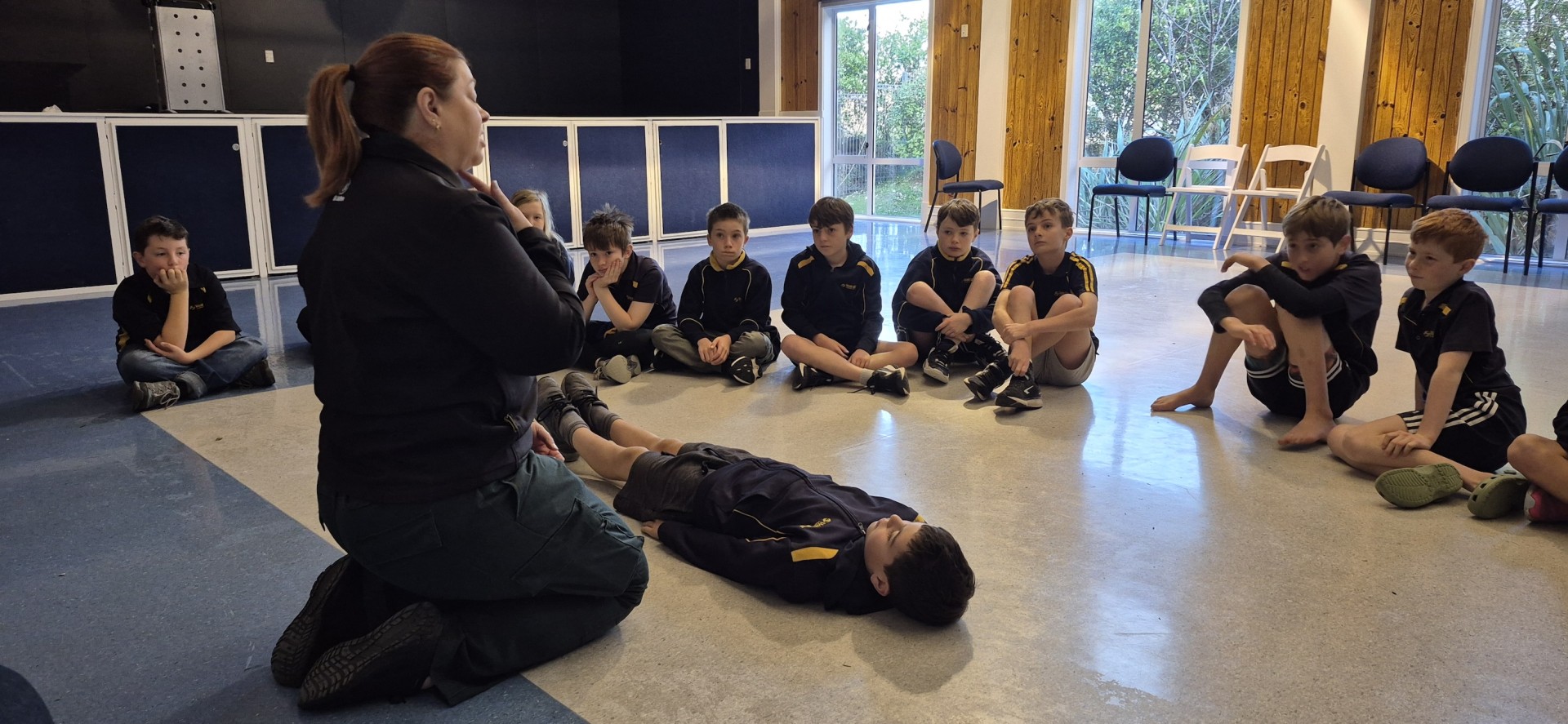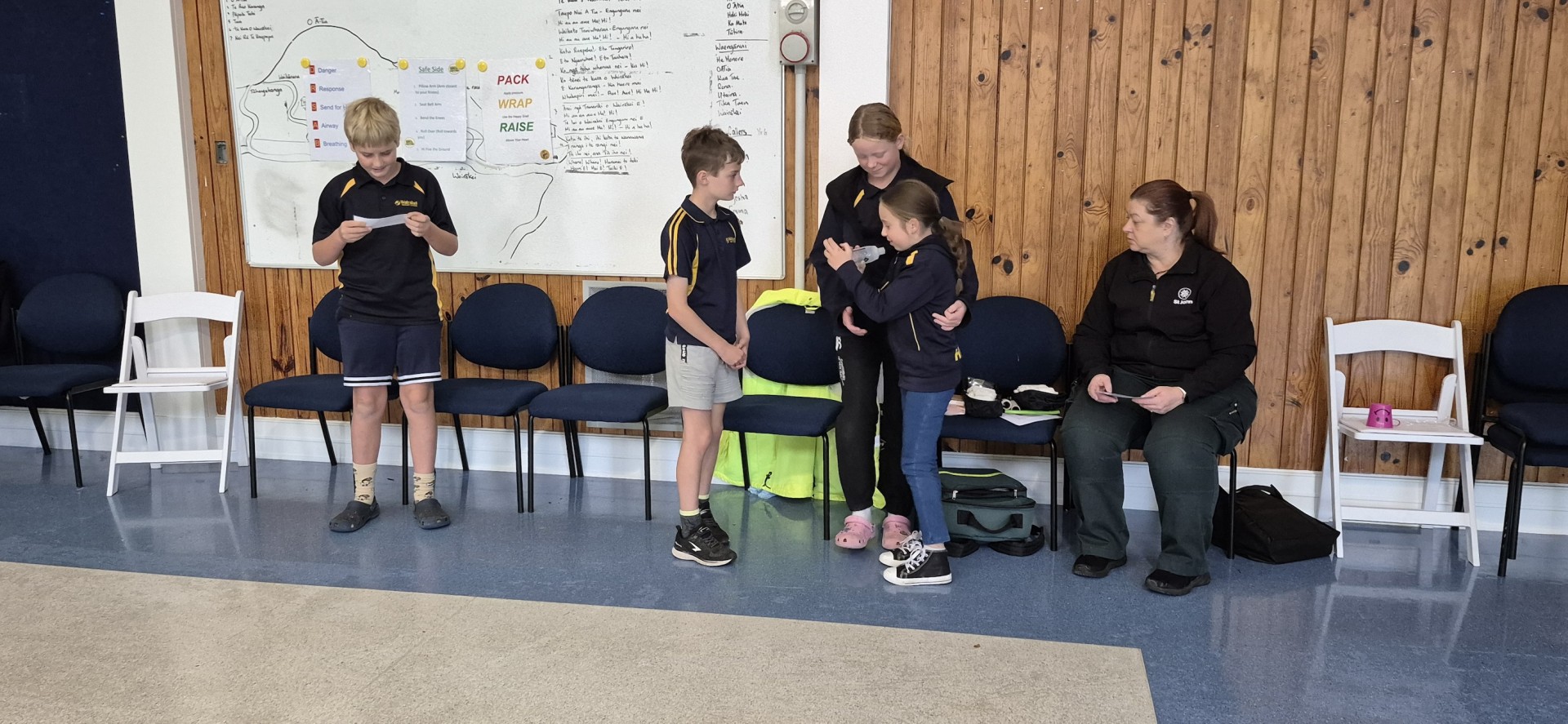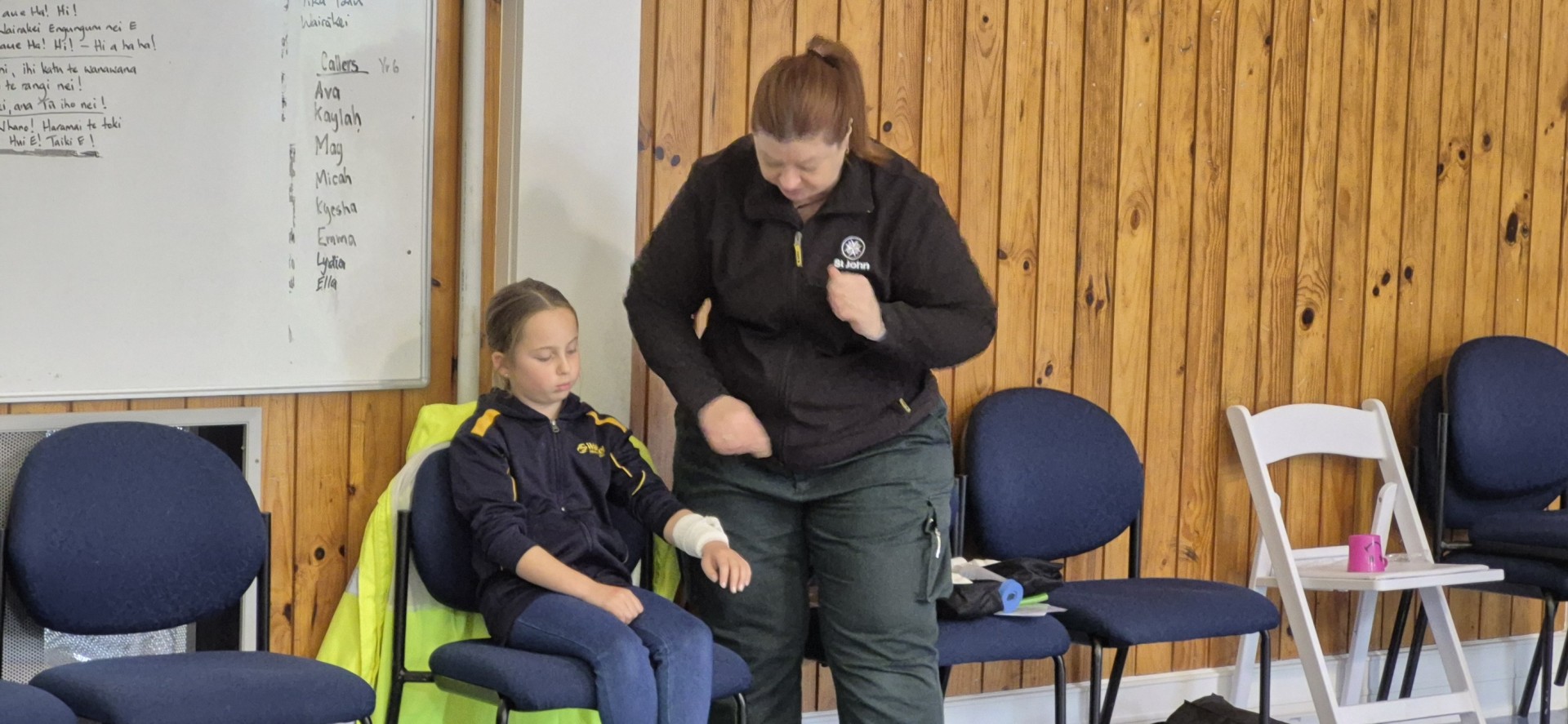St John facilitator Annette began by introducing DRSAB, a simple and effective way to remember what to do in an emergency. Benjamin volunteered to be the first patient, lying still on the floor while Annette talked the group through each step:
D - Danger: Check for any danger to yourself, the person needing help, or anyone else.
R - Response: Check if the person is responsive by speaking to them or tapping their shoulders.
S - Send for help: Call 111 and ask for an ambulance if needed.
A - Airway: Make sure the person’s airway is open by gently tilting their head back and lifting their chin.
B - Breathing: Look, listen, and feel for breathing.
Normally, the acronym includes a final C for Circulation and CPR, but Annette explained that this would be covered later in intermediate and high school. There were a few giggles as Benjamin did his best to lie as still as a log, but the message was clear: these steps can save a life.
In small groups, role play cards of different scenarios involving first aid required collaboration, while performing them in front of the class was a step outside of the comfort zone for some.
Benjamin, Georgia, Phoebe, and Alex set the scene with a kitchen accident. Benjamin pretended that he had stabbed his arm with a knife while cooking, and the group quickly learned that removing the knife would make things worse. Roller bandages were applied, with firm pressure on either side of the plastic knife.
In another group, William enthusiastically acted out having a severe burn. Thomas and Lisette demonstrated how to cool the burn area under running water and cover it gently with cling wrap.
Hazel, Thomas, Grayson, and Kyesha demonstrated how to assist someone in the middle of an asthma attack. The group practised calming the patient, helping them sit upright, and using a spacer correctly. Kyesha was interested to learn that using a spacer is much more effective in helping medicine reach the lungs.
Other groups had role play scenarios covering how to aid someone with type 1 diabetes having an emergency, and how to care for someone who has broken bones. One of the key messages was that when calling an ambulance, it’s important to speak clearly, stay calm, and give as much detail as possible.
The session ended with a closer look at stopping bleeding. Kian shared his knowledge with the rest of the class: “You shouldn’t tilt your head back when you have a nosebleed, because it can go down your throat.” This was interesting for the other members of the class, who had always thought that this was the correct thing to do. Hazel volunteered to help demonstrate the Pack, Wrap, Raise method before everyone buddied up to practise it themselves. There was a lot of excitement as Room 1 learned to first pack the wound with absorbent material, then wrap it firmly with a bandage, and finally raise the limb above the level of the heart to help reduce bleeding.
Heath, who had sprained his ankle over the weekend, took the opportunity to get some advice from Annette after the session had ended.
It was a hands-on session full of laughter, and teamwork. Room 1 came away with some valuable first aid knowledge, and a stronger understanding of how to stay calm and take action in an emergency.










Comments
No one has commented on this post yet.